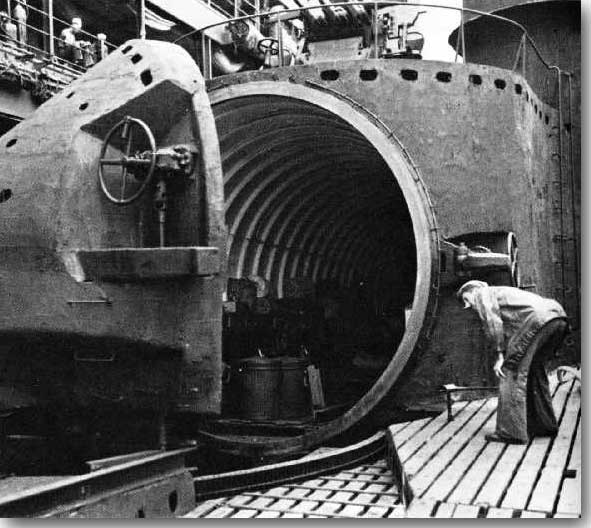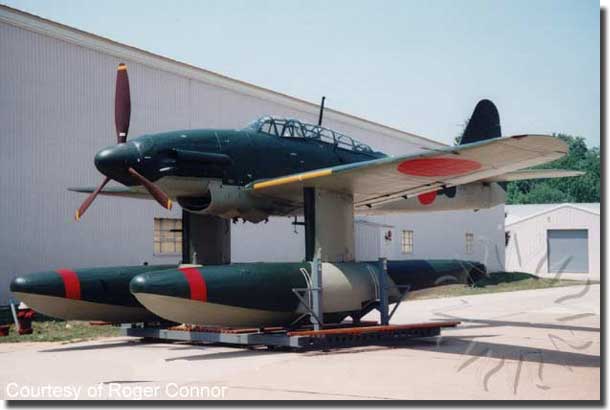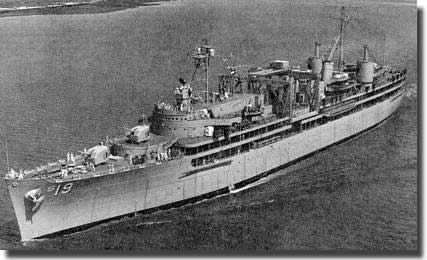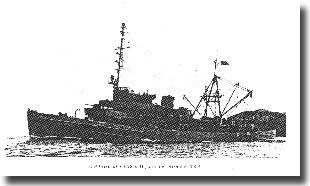|
Japanese Submarine I-401 found off Hawaii
Introduction.
The huge hangar door open on the deck of an I-400 class Japanese Submarine, probably this is I-401. I-401, has just been found off Hawaii. University of Hawaii team finds sunken wartime submarine.
Kirby went on to say, the main hull is in good shape, the numbers I-401, clearly visible on the sides, and her AA guns in almost perfect condition.
Japanese float plane on her launch catapult on the deck of I-14 The I-400 class. This class carried a 6 inch deck gun, a bridge 25mm AA gun, and a further three by 25mm AA guns mounted on top of the large hangar. Eight bow torpedoes completed her armament. These giant submarines carried a crew of 145, and each with three Aichi M6AI Seiran float plane Torpedo bombers, the floats detached and the wings and tail folded up. The last remaining Seiran float plane was restored at the United States National Air and Space Museum in Washington, DC. By design, the I-400 class had a range of 37,500 nautical miles at a cruising speed of 14 knots, all in all, a formidible weapon.
The Aichi M6AI Seiran aircraft, three of these were carried by the I-400 class Japanese Submarines. Submarine Squadron.One. This idea was shelved for another bold plan, to launch a strike against the Panama Canal Gatun locks, and thus disable the canal for months. Again the plan was dropped, and finally it was decided to sail the Squadron off to Ulithi Atoll, and strike the US Naval forces there. I-13 had been sunk by USS Lawrence C Taylor ( DE 415 ) on the 16th. of July 1945, some 540 miles east of Yokahama. Emperor calls surrender. Commanders Barney Sieglaff, Hi Cassidy, and John McCain Jnr, were given command of I-400, I-401, and I-14, in that order. These three ex Japanese Submarines were sailed from Japan for Pearl Harbor on the 18th. of December 1945, escorted by the Submarine Rescue Ship USS Greenlet, and in company with the Submarine Tender USS Proteus.
Submarine Tender USS Proteus Sailors aboard I-400 do some horse trading. The Japanese are great tunnelers, and at Yokahama were huge tunnels filled with all types of equipment. Serving as a Lieutenant RAN in the Australian heavy 8 inch cruiser Shropshire, we had arrived in Japanese waters before the signing of the surrender aboard USS Missouri on Sunday the 2nd. of Seprember 1945. My Commander had sent me ashore at least a week before this document was signed, and I had checked out some of this Japanese material. The ship's Navigator, used an English Barr and Stroud, metre long range finder to check his distance away from a Buoy that he was coming up to secure to, or to decide the exact spot he needed to reach before the anchor was let go. This instrument had a spigot attached that fitted into a hole on either side of the bridge wing, and sat ready to be used, on our first approach to the fleet anchorage off Yokahama, he was at the Barr and Stroud, the Captain called out "Pilot," he swung round to respond, knocked the range finder, away it went, to splash down in the sea some 60 feet below. This range finder was quite expensive, and was the responsibility of the Navigator, he faced an expensive bill for it. In one of my forays into the Yokahama caves I had come across a pile of British equipment that the Japanese had picked up from the British Naval Base in Singapore. I acquired four boxed Barr and Stroud metre long range finders for our Pilot, suggesting he could knock another three over the side, and still be OK.
USS Greenlet, Submarine rescue ship. But I digress, some of I-400's sailors had helped themselves to suitable Japanese loot from the Yokakama caves, and several cases of Japanese rifles were stashed away in one of her bow torpedo tubes. On arrival at Guam, a US store ship carrying cases of American beer was alongside, a case of rifles changed hands for as much beer as a small group of US sailors could carry, this was hidden away in one of the torpedo tubes. The submarine sailing from east to west, celebrated Christmas Day, crossed the International Date Line to enjoy a second such day, more serious celebrating, until the acquired beer had all been guzzled down. The Officer of the Deck, had occasion to berate the man on the wheel for steering a somewhat zig zag course, no doubt from the influence of the amount of illicet grog consumed, I should point out that US Naval ships are traditionally dry, and do not carry alcohol, even in Officer Country. The Japanese Submarines arrive at Pearl Harbor. Three Japanese submarines sunk off Hawaii. Thursday the 17th. of March 2005. We have gone full circle, the I-400 Class, broke new ground when they were built in WW2, virtual a seagoing small, under water aircraft carrier, with a great potential that was never fully realised. They sailed across the Pacific to Hawaii, only to be sunk, talk of fear that Russian scientists wanted to visit and explore them being the main reason to dispose of them. Now, much excitement that one of that number has been discovered again, but, what will now result remains to be seen. Conclusion. We await the outcome of this discovery with interest. |





